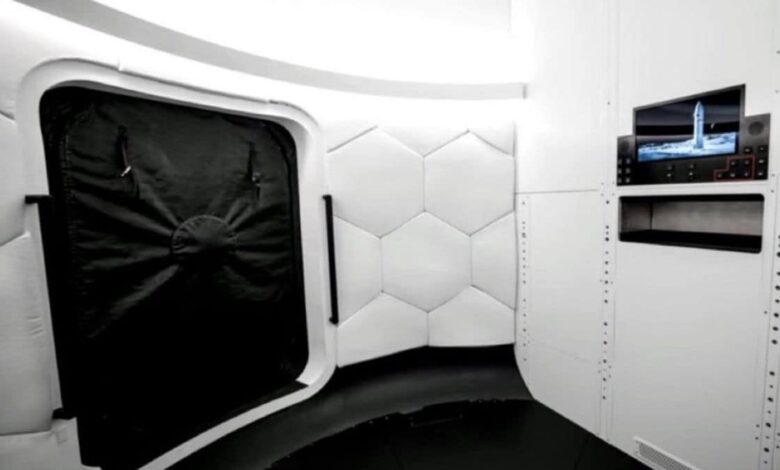SpaceX unveils futuristic crew cabins for Artemis III moon mission

SpaceX has introduced detailed mock-ups of crew cabins, sleeping quarters and research labs within its Human Landing System (HLS) Starship, designed for the Artemis III moon landing scheduled for 2026. These mock-ups were set up in the nose cone section of the HLS at the Starbase SpaceX facility in Texas. It provides a glimpse into the conditions astronauts may encounter on their route to and from the lunar surface. The interior is intended to maximize both comfort and functionality, supporting the daily activities and scientific work of astronauts during lunar expeditions.
Better living and working conditions for astronauts
According to one tweet By Toby Li, the cabins provide designated spaces for essential activities such as sleeping, dining and research, allowing astronauts access to essential amenities in a limited but adaptable environment. SpaceX has revealed that the airlock section in particular has a streamlined design, allowing for smoother transitions between the lunar surface and the spacecraft. This layout is critical to mission efficiency as it is intended to minimize space constraints while enabling safe operations.
Supporting the goals of NASA’s Artemis program
SpaceX’s innovations align with the overarching goals of NASA’s Artemis program, where commercial partnerships are critical to achieving cost-effective, sustainable space exploration. NASA’s decision to rely on SpaceX’s spacecraft as its main lunar lander is a strategic move to enable rapid progress in human spaceflight. By using Starship, NASA aims to reduce the costs associated with lunar exploration and accelerate project timelines, with the HLS Starship transporting astronauts from the lunar orbiting Orion spacecraft to the lunar surface.
Preparing for deeper space exploration
SpaceX doesn’t stop at interior design. The company is also testing additional features, such as solar panels and enhanced docking systems, to improve the spacecraft’s overall operational capability. These additions are essential for long-duration missions because they can increase the spacecraft’s range and durability. Through these developments, SpaceX is paving the way not only for lunar exploration, but also for future human missions beyond the moon, possibly to Mars. The Artemis III mission marks a turning point in space exploration, with SpaceX playing a crucial role in preparing the next generation of crewed missions to other planetary bodies.




